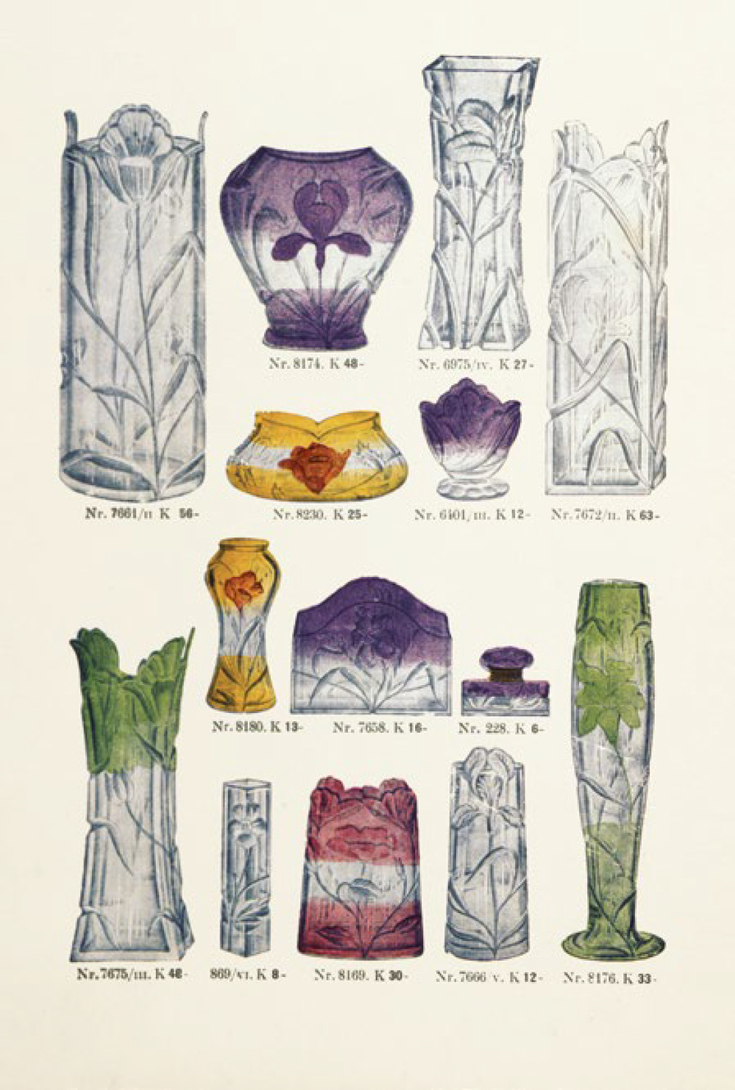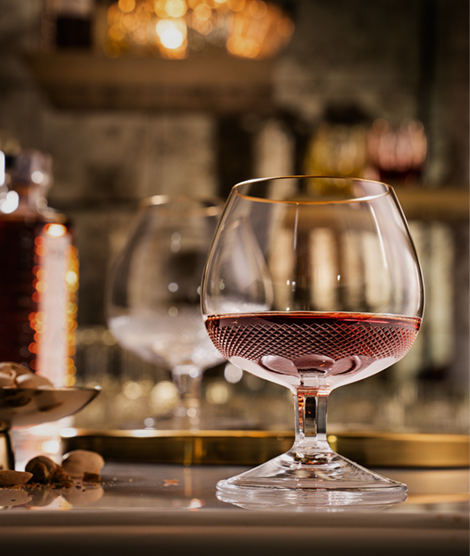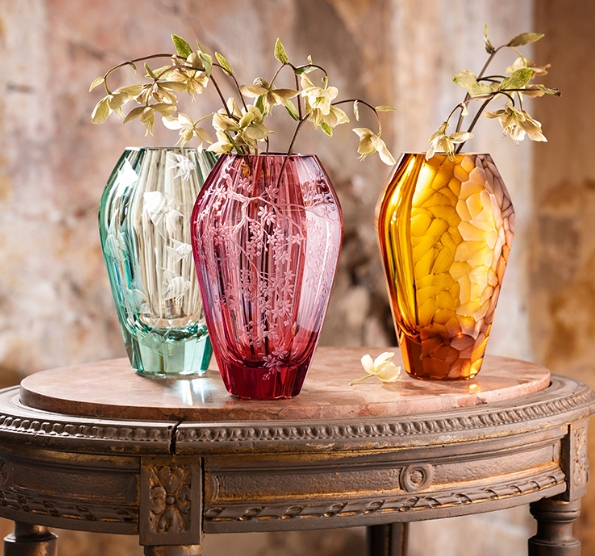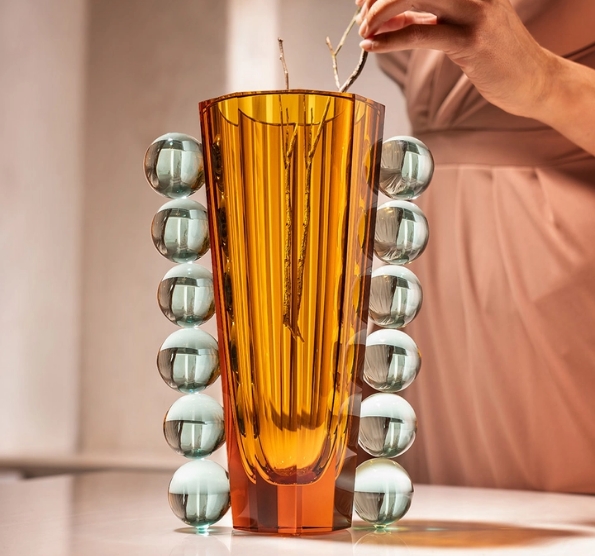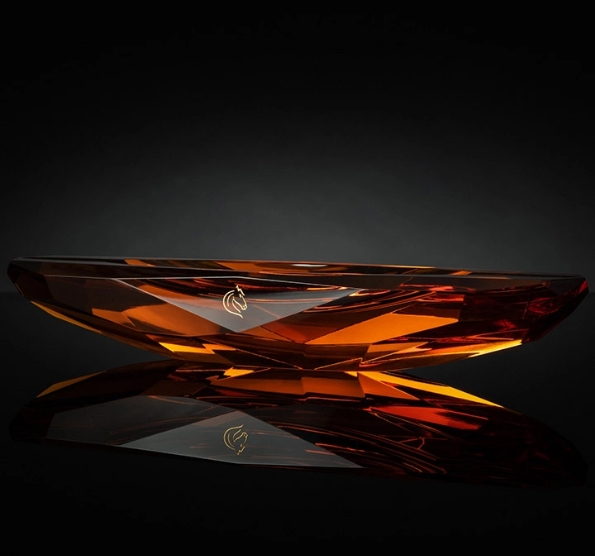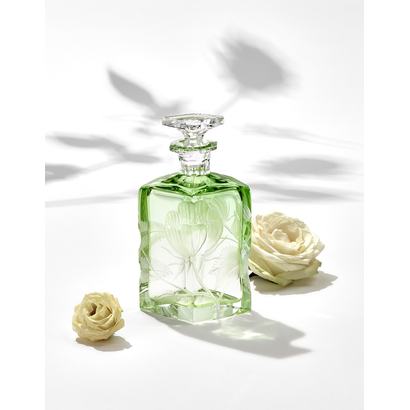Breadcrumbs navigation
- Home page
- About Moser
- Blog
- Facts you might not know about Art Nouveau
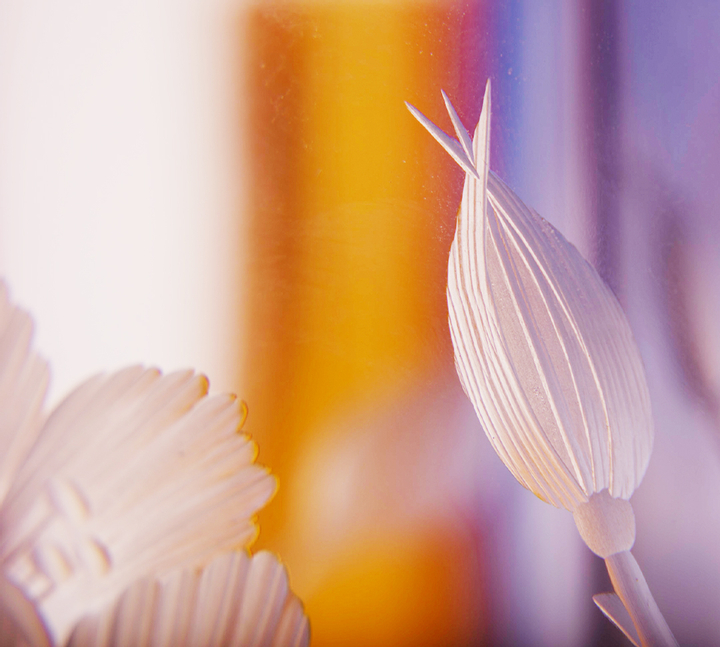
Facts you might not know about Art Nouveau
Ornaments, unusual colours and shapes inspired by Nature. Art Nouveau not only opened the door to the 20th century but also to experimental work and modern trends in art. What makes this artistic style, that also inspired one of Moser's collections, so interesting?
Different designations in different countries
At the turn of the century, this artistic style impacted almost all domains of human creativity. It influenced painting, music and poetry, shaped sculpture, architecture, and furniture design, and inspired jewellery and fashion alike. Art Nouveau took root in many European countries, so it is no wonder that it gradually developed different names. In Germany and Austria, it was called Jugendstil, with a special branch of Wiener Secession in Vienna, while the Italian name is Stile Floreale. The English called it the Arts and Crafts movement. Still, the most widespread designation became the French Art Nouveau, a name derived from the small Maison de l'Art Nouveau gallery in Paris.
A combination of craft, emotion and beauty
Industrial products don’t always have to be simple and purely functional. This is something the members of the British Arts and Crafts movement thought too. In the second half of the 19th century, they countered the Industrial revolution by returning to the folk traditions and craftsmanship of medieval masters. The British textile designer William Morris, for example, came up with decorative and floral patterns, which later became the leitmotif of the Art Nouveau applied art. Art Nouveau first emerged as a decorative style and only later developed into a new form of fine art and architecture. It contributed to blurring the boundaries between fine and applied arts. The father of Gustav Klimt was a goldsmith after all, which inspired the painter to use gold on the decorative surfaces of his portraits.
Inspiration from botanical illustrations or Japanese woodblock printing
Lily, iris, tulip, water lily or poppy: the flowers that typically adorned Art Nouveau vases also inspired artists, thanks to the work of botanical illustrators. Before the invention of photography, botanical illustration was the only way to visually capture plant species and other organisms. Among those who inspired other works of art were Pierre-Joseph Redouté, a painter and botanist at the court of Marie Antoinette, and German naturalist and artist Ernst Haeckel, who presented the world with drawings of previously invisible microscopic organisms. The Art Nouveau artists were also inspired by the technique of Japanese woodblock printing, depicting Nature with crisp, clean lines.
The Moser Art Nouveau collection
Moser Art Nouveau vases with plant motifs are a wonderful example of the work of Karlovy Vary glassmakers, grinders and engravers, who are constantly perfecting their masterful technique. Vases of various shapes from collections such as Chrysis, Calla or Lara are decorated with a whole range of finely engraved flowers, from delicate roses and hibiscus to lilies, hydrangeas and magnificent irises. Their colour transitions, inspired by natural light and the colours of Nature, will add a touch of true art into your interior. 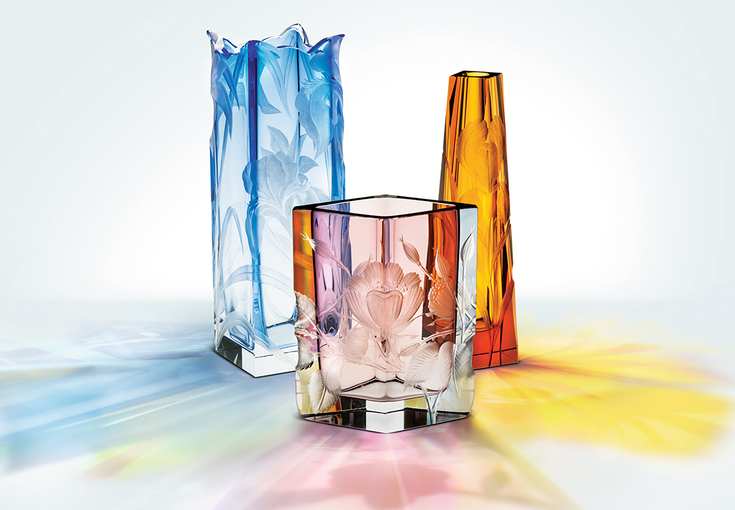
Linearity and colours contributed to the creation of meanings
Art Nouveau painters and artists often despised sketch drawings. The shape in paintings was mainly defined by drawing clear lines on a flat 2D surface with the absence of shading. The elements of rippling lines, evoking the impression of movement, or arabesque, a linear artistic decoration, prevailed in paintings, decorative arts and new urban buildings. Another source of clean lines was women's hair. As Art Nouveau developed alongside Symbolism, the symbolic meaning of colours also came into play at that time. Yellow was perceived as a symbol of matter, the sun, life and joy, while blue and green were associated with supernatural qualities, and white represented a lost hope. 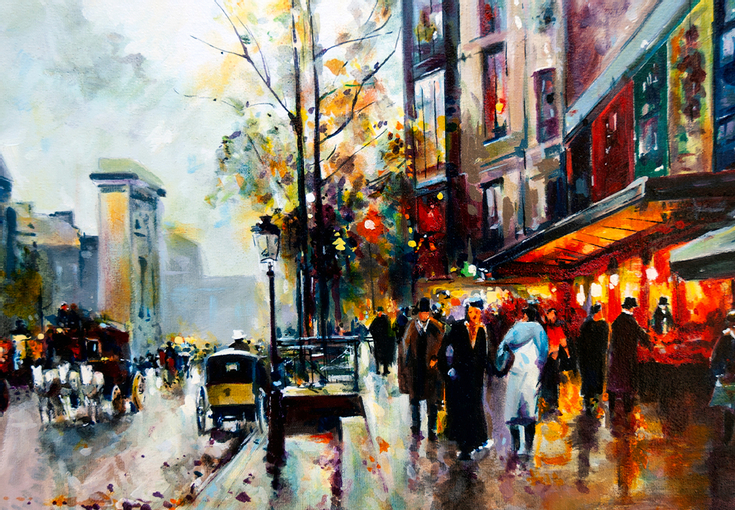
The flourishing of a woman on canvas and posters
Just as Art Nouveau lamps or vases shed a new kind of light on the walls of the interiors, women as artistic objects were aesthetically reimagined too. Painters captured them as symbols of beauty, accentuating the flowing lines of their hair and body shapes with various formats of paintings. The Czech painter Alphonse Mucha was fascinated by the gracefulness and nobility of women, but also their mysterious provocativeness and eccentricity. In Gustav Klimt's paintings, they became independent but ethereal personalities full of power and passion. And in the decadent drawings of the English Art Nouveau artist Aubrey Beardsley, female figures were filled with deep sexuality. Portraits of women on posters also foreshadowed modern advertising posters and helped sell cigarettes, luxury liqueurs and coffee, as well as bicycles and irons.
No material escaped the attention of architects
Art Nouveau originated mainly in large cities like Vienna, Paris or Prague. That is why people usually saw it at places like railway stations, restaurants and cafés. In architecture, completely new and often revolutionary methods of building and construction emerged. Among other things, it was new construction materials like steel or reinforced concrete. Glass also received more attention, and in new buildings, narrow windows were replaced with large glass panels. Art Nouveau stained glass or mosaics became standard features too. During the Art Nouveau period, architects were influenced by the Gesamtkunstwerk – a work of art that combined several types of art like architecture, painting, music and poetry. 
The success of Art Nouveau came with the World's Fair in Paris
The Art Nouveau peaked in 1900 with the Paris Exposition, which also featured the Moser glassworks collection. The exhibition showed Art Nouveau principles applied to almost every domain of human life and art. It also foreshadowed the construction of the Paris Metro and the widespread use of the escalator. It was visited by over 50 million people and became a symbol of cultural and technological progress. The Moser glassworks exhibited its collections in the Austro-Hungarian section of the Parisian Grand Palais. It presented the admiring public with various techniques of shaped and decorated glass, including its innovative, deeply engraved floral motifs on multi-coloured vases, and a special series called Karlsbader Secession. Moser pays homage to Art Nouveau to this day.
